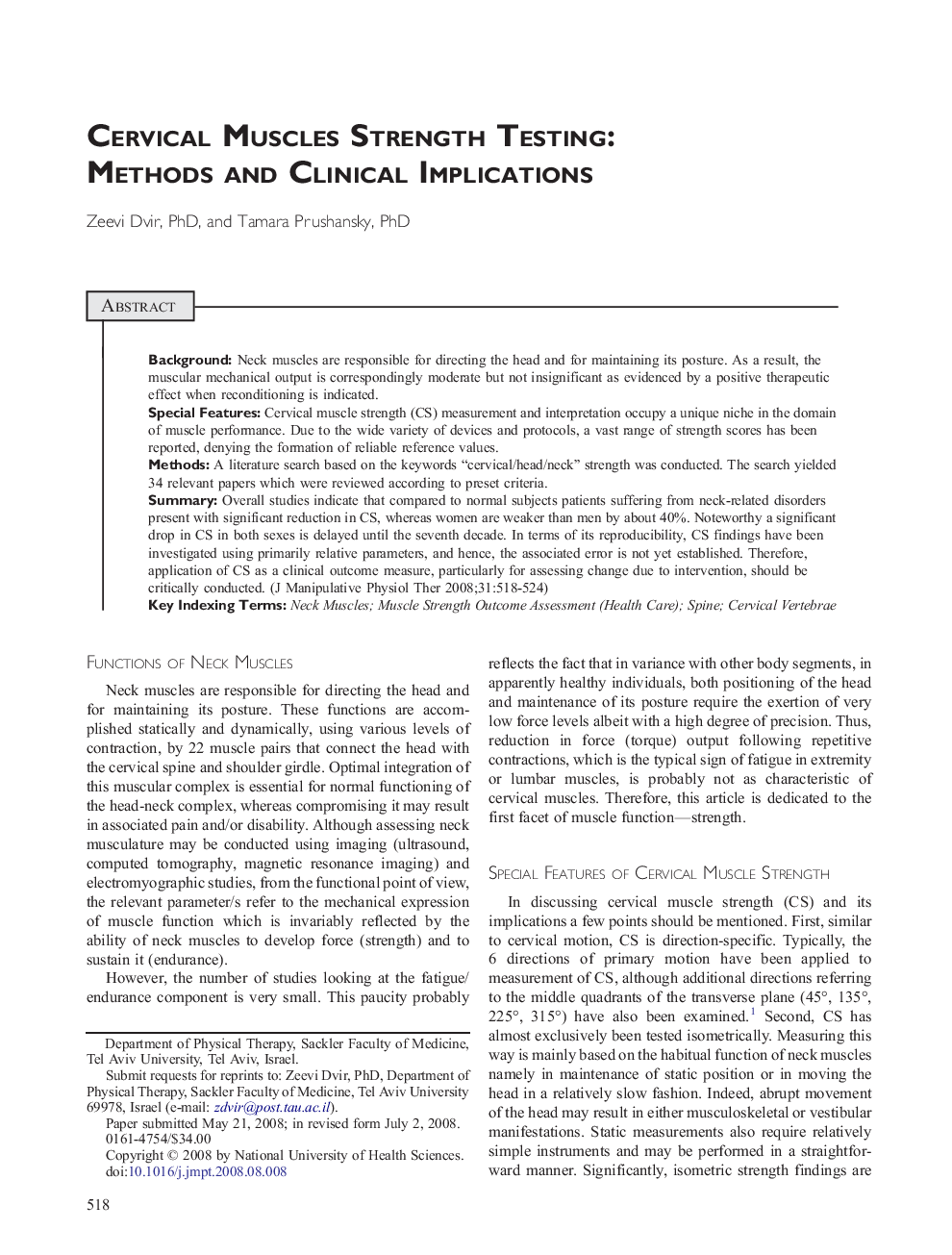| Article ID | Journal | Published Year | Pages | File Type |
|---|---|---|---|---|
| 2621651 | Journal of Manipulative and Physiological Therapeutics | 2008 | 7 Pages |
BackgroundNeck muscles are responsible for directing the head and for maintaining its posture. As a result, the muscular mechanical output is correspondingly moderate but not insignificant as evidenced by a positive therapeutic effect when reconditioning is indicated.Special FeaturesCervical muscle strength (CS) measurement and interpretation occupy a unique niche in the domain of muscle performance. Due to the wide variety of devices and protocols, a vast range of strength scores has been reported, denying the formation of reliable reference values.MethodsA literature search based on the keywords “cervical/head/neck” strength was conducted. The search yielded 34 relevant papers which were reviewed according to preset criteria.SummaryOverall studies indicate that compared to normal subjects patients suffering from neck-related disorders present with significant reduction in CS, whereas women are weaker than men by about 40%. Noteworthy a significant drop in CS in both sexes is delayed until the seventh decade. In terms of its reproducibility, CS findings have been investigated using primarily relative parameters, and hence, the associated error is not yet established. Therefore, application of CS as a clinical outcome measure, particularly for assessing change due to intervention, should be critically conducted.
